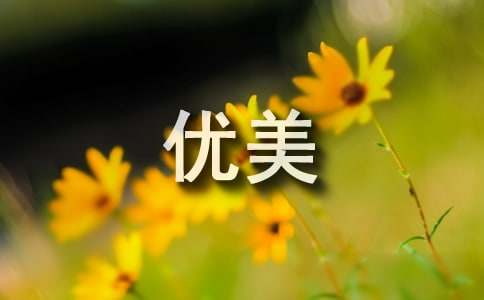春节的来历英文版(精简3篇)
The Origin of Chinese New Year
Article One
The Chinese New Year, also known as the Spring Festival, is an important traditional holiday celebrated by the Chinese community around the world. It marks the beginning of the lunar calendar and is a time for families to come together and celebrate. The origins of the Chinese New Year can be traced back thousands of years to ancient legends and customs.
According to one legend, there was a mythical beast called Nian who would come out on the first day of the new year to terrorize villages. The villagers soon discovered that Nian was afraid of the color red and loud noises. They would hang red lanterns and scrolls on their doors and set off firecrackers to scare away the beast. This tradition has been passed down through generations and is still practiced today.
Another legend tells the story of a monster named Year who would come every New Year's Eve to eat villagers. One year, an old man advised the villagers to hang red lanterns and set off firecrackers to ward off the monster. The plan worked, and the villagers were saved. From then on, it became a tradition to celebrate the New Year with red decorations and firecrackers.
In addition to these legends, the Chinese New Year is also influenced by ancient agricultural practices. The festival marks the end of winter and the beginning of spring, symbolizing the start of a new farming season. People would offer sacrifices to the gods and pray for a bountiful harvest. They would also clean their homes to sweep away bad luck and make way for good fortune.
Over time, the Chinese New Year has evolved into a time for family reunions and cultural celebrations. People travel from all over the world to be with their loved ones during this festive season. It is a time for feasting, exchanging gifts, and honoring ancestors. The streets are adorned with colorful decorations, and lion and dragon dances can be seen in many cities. The Chinese New Year is a time of joy, hope, and renewal.
In conclusion, the Chinese New Year, also known as the Spring Festival, has a rich history and is deeply rooted in ancient legends and customs. It is a time for families to come together and celebrate the start of a new lunar year. The traditions of hanging red decorations, setting off firecrackers, and offering sacrifices to the gods are still practiced today. The Chinese New Year is a time of joy, hope, and new beginnings for people around the world.
The Significance of Chinese New Year
Article Two
The Chinese New Year, also known as the Spring Festival, is not only a time for celebration but also carries deep cultural and symbolic significance. It is a time to honor ancestors, strengthen family bonds, and embrace new opportunities.
One of the most important aspects of the Chinese New Year is the reunion of families. For many Chinese people, this is the only time of the year when they can gather with their loved ones. People travel from all over the world to be together during this festive season. It is a time to show respect and gratitude to the elders and to strengthen family ties. Family members exchange gifts and red envelopes containing money as a symbol of good luck and blessings for the coming year.
Another significant aspect of the Chinese New Year is the honoring of ancestors. Families visit ancestral gravesites to pay their respects and offer prayers. This is a way of acknowledging and expressing gratitude for the sacrifices made by previous generations. Ancestral worship is an important part of Chinese culture, and the Chinese New Year provides an opportunity to connect with one's roots and heritage.
The Chinese New Year is also a time for new beginnings and embracing opportunities. It is believed that the actions and behavior during the New Year will set the tone for the rest of the year. People clean their homes to sweep away bad luck and make way for good fortune. They also decorate their homes with red lanterns and scrolls, which symbolize happiness, luck, and prosperity. The Chinese New Year is a time to reflect on the past year and make resolutions for the year ahead.
In addition to family reunions and ancestral worship, the Chinese New Year is celebrated with various customs and traditions. Lion and dragon dances are performed to bring good luck and scare away evil spirits. Fireworks and firecrackers are set off to ward off bad luck and bring joy and prosperity. Red decorations are hung to symbolize luck and happiness.
In conclusion, the Chinese New Year is a time of great significance and cultural importance. It is a time for family reunions, honoring ancestors, and embracing new beginnings. The customs and traditions associated with the Chinese New Year reflect the values and beliefs of the Chinese community. It is a time of joy, hope, and renewal, and is celebrated by Chinese people around the world. The Chinese New Year is a cultural treasure that brings people together and carries forward the traditions of the past.
春节的来历英文版 篇三
the chinese new year is now popularly known as the spring festival because it starts from the begining of spring (the first of the twenty-four terms in coodination with the changes of nature). its origin is too old to be traced. several explanations are hanging around. all agree, however, that the word nian, which in modern chinese solely means "year", was originally the name of a monster beast that started to prey on people the night before the beginning of a new year.
one legend goes that the beast nian had a very big mouth that would swallow a great many people with one bite. people were very scared. one day, an old man came to their rescue, offering to subdue nian. to nian he said, "i hear say that you are very capable, but can you swallow the other beasts of prey on earth instead of people who are by no means of your worthy opponents?" so, it did swallow many of the beasts of prey on earth that also harrassed people and their domestic animals from time to time.
after that, the old man disappeared riding the beast nian. he turned out to be an immortal god. now that nian is gone and other beasts of prey are also scared into forests, people begin to enjoy their peaceful life. before the old man left, he had told people to put up red paper decorations on their windows and doors at each year's end to scare away nian in case it sneaked back again, because red is the color the beast feared the most.
from then on, the tradition of observing the conquest of nian is carried on from generation to generation. the term "guo nian", which may mean "survive the nian" becomes today "celebrate the (new) year" as the word "guo" in chinese having both the meaning of "pass-over" and "observe". the custom of putting up red paper and firing fire-crackers to scare away nian should it have a chance to run loose is still around. however, people today have long forgotten why they are doing all this, excep

[春节的来历英文版]






